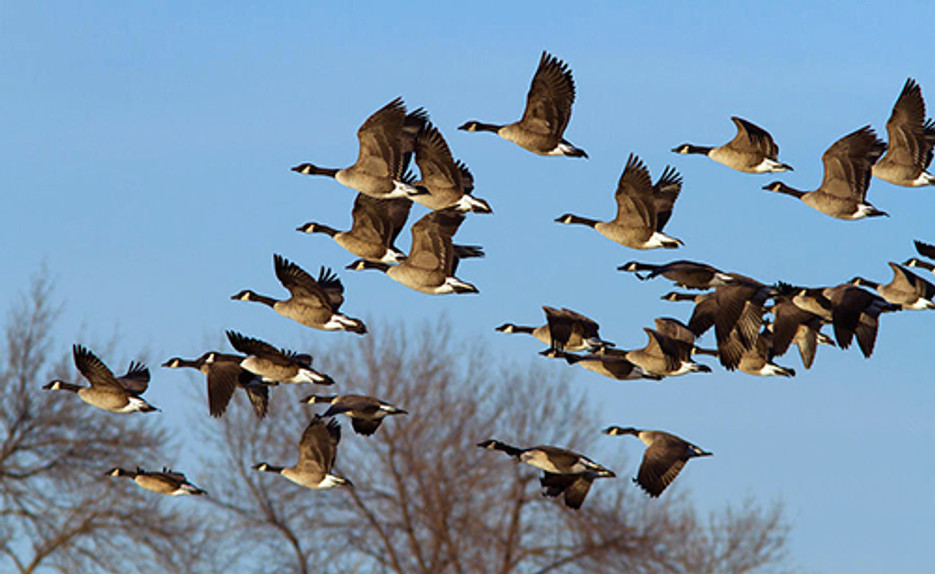Got Geese? Humane, Affordable & Effective Methods of Goose Control
The geese are coming. You will see them flying in the majestic V-formation overhead with their black head and necks with a light cream colored breast. Their chinstrap is black and white. There are over 10 subspecies of Canada Geese. Generally, the geese get darker in color as you go westward and they are smaller in size moving northward. There has been a documented upsurge of geese in suburban and urban areas. The geese tend to migrate towards areas where there are water sources. This is why you see geese in parks and golf courses. If you have a pool in your backyard, you might see geese there as well. Apartment complexes that are next to golf courses have nuisance geese in their pool and ponds and even walking around the complex.
Close to spring the flocks start separating and they begin to find places to nest. They are very territorial and could become quite aggressive. They will chase you away from an area if they feel threatened. It can be quite concerning when children want to play outside. Golf courses and parks or any place populated by the public could be at risk of the aggressive geese. If you see them start hissing, honking and pumping their heads, move away from them. The geese will also fight each other for territory.
Not only are geese a nuisance with their honking and aggressive behavior, but their droppings will create a hazard. Their feces can be hazardous to one’s health. One single goose poops every twenty minutes which adds up to 1.5 pounds of feces every day. You can imagine the extent of feces that is accumulated by a flock of geese. The feces of geese contain a wide range of pathogens capable of infecting humans. The droppings also contain a microscopic parasite called Cryptosporidium. This parasite is one of the most common known diseases that infects the water, both drinking water and recreational water.
Safe and Economical Goose Control Methods
Deterring nuisance geese does not need to be expensive or difficult and time-consuming. Geese chomp and graze on the grass and shrubs. There is a goose repellent that is non-toxic and can be sprayed onto the grass and shrubs using a convenient hand held sprayer. This Migrate Goose Repellent is often used at parks and golf courses as well as cemeteries, shorelines and backyards. It is best to apply this goose repellent when the grass has been freshly mowed. The area should also be dry. The liquid goose repellent can be applied, and the second application should be done one week later. Rain, mist and sprinklers will not wash off the repellent. There is also no run-off contaminants to the environment to worry about. The liquid repellent works by irritating their trigeminal nerve and mucous membranes of the pest bird. The substance that does this is simply a non-toxic grape extract that is registered with the EPA. The extract is called Methyl Anthranilate and has proven to deter geese and other pest birds. One gallon of the repellent will cover approximately 16,000 square feet. The ratio of repellent to water is 20 parts water and one part of the concentrate. The goose repellent is available in one-gallon bottles, or one case which contains 4 one-gallon bottles. It is one of the most cost effect bird control products on the market.
Another goose repellent that will work for a large area is sound repellent. It is a sonic sound device that broadcasts pre-recorded goose distress calls. The geese will want to avoid the area all together and move to safer areas. A single device can cover up to an acre of land. Additional speakers can be added to maximize the coverage.
There are visual deterrents that will also alter the bird’s behavior and send them flying on by. Visual disturbances confuse the fowl and frighten them away. There are many different visual deterrents that can be hung around the home or near the water source.

